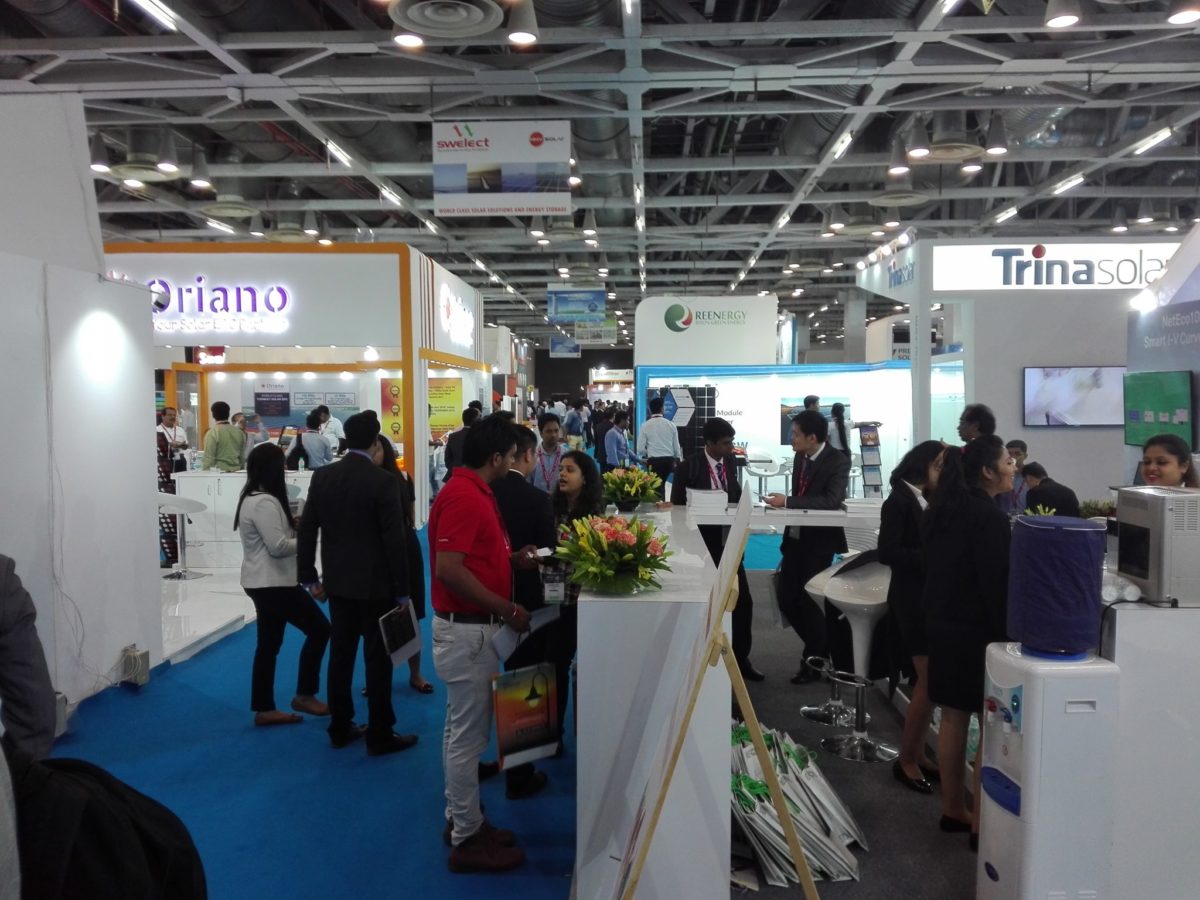According to Bridge to India, India installed 7.5 GW of solar in past four quarters and is expected to reach 20 GW of cumulative capacity at the end of this financial year – strong figures that shaped the tone of this year’s Renewable Energy India Expo (REI) in Noida, India. The renewable energy event is getting bigger every year, and last week’s show saw a number of both upstream and downstream companies seeking aggressive market expansion.
Upstream segment
While there were several automation equipment providers and a few machine manufacturers exhibiting at the show, around 95% of them were foreign companies. One of the most critical steps in module manufacturing is the lamination process, but across the show floor there were just three major equipment suppliers. The largest of those was Jinchen from China as it claimed, which has so far shipped 2 GW of laminator capacity to India, with another 600 MW in the pipeline, Vikas Singh, Jinchen’s sales manager, told pv magazine.
SC Solar, another China-headquartered company, claims to be world’s largest module manufacturing automation equipment supplier. They have installed 37 GW of machines in the last eight years and in India sold 1.2 GW of automation equipment to Adani last year, according to SC-Solar’s Jack Wu.
Wu also confirmed to pv magazine that the company is adopting an aggressive growth strategy for the Indian market, planning to ship another 200 MW by December 2017. SC Solar is developing bifacial, half-cell, and flexible modules, with a cumulative installation capacity of 1.1 GW.
The show did reveal a trend of India-based companies stepping up collaboration efforts with foreign companies seeking to enter the Indian solar market. One example was Havells, India’s leading cable and electrical goods supplier, which announced a tie up with SolarEdge, the Israeli power electronics provider. Together the firms have a target of 50 MW grid-tied installations for the 2017-18 financial year. Havells was drawn to the power optimizer technology developed by SolarEdge. The company told pv magazine that quality is always its primary goal, which they want to integrate into their solar business in order to achieve low downtime and high compatibility.
Downstream segment
Across the downstream segment, which was inevitably much busier than the upstream segment, many new integrators, system monitoring providers, and financers exhibited at the halls.
One of which was Solar-Log. The PV monitoring company has introduced a monitoring device handling up to 2 MW of rooftop plants. Targeting only rooftop installations, the new monitoring system has a user-friendly interface that can monitor the energy production of each string through its data-logger. Inverters based on different communication protocols like RS485 and RS422, can be easily connected. In India more than 2,000 units have already been sold, Solar-Log told pv magazine, with the amount of solar PV capacity monitored by its software in India now standing at 500 MW.
For many utility scale integrators operating in India, the target of reaching 60 GW of ground-mounted capacity by 2022 is widely seen as a more realistic target than the 40 GW goal for the rooftop sector, which the entire industry considers unrealistic. However, Norway’s REC, a leading rooftop integrator with more than 250 MW in India, believes that the 40 GW target is commercially viable, but the 2022 timeframe is unreasonable. REC told pv magazine that its emphasis now for the Indian market is one of quality and focusing on sustainability and good after sales support.
This quality over quantity approach appears to be working: REC said that globally their customer base for rooftop applications has increased by 57% from H1 2016 to H1 2017, with 84% customer retention. India has begun considering quality as an important factor, prompting REC to this year roll out its Global Installers program certification and quality program in India.
This content is protected by copyright and may not be reused. If you want to cooperate with us and would like to reuse some of our content, please contact: editors@pv-magazine.com.



Good